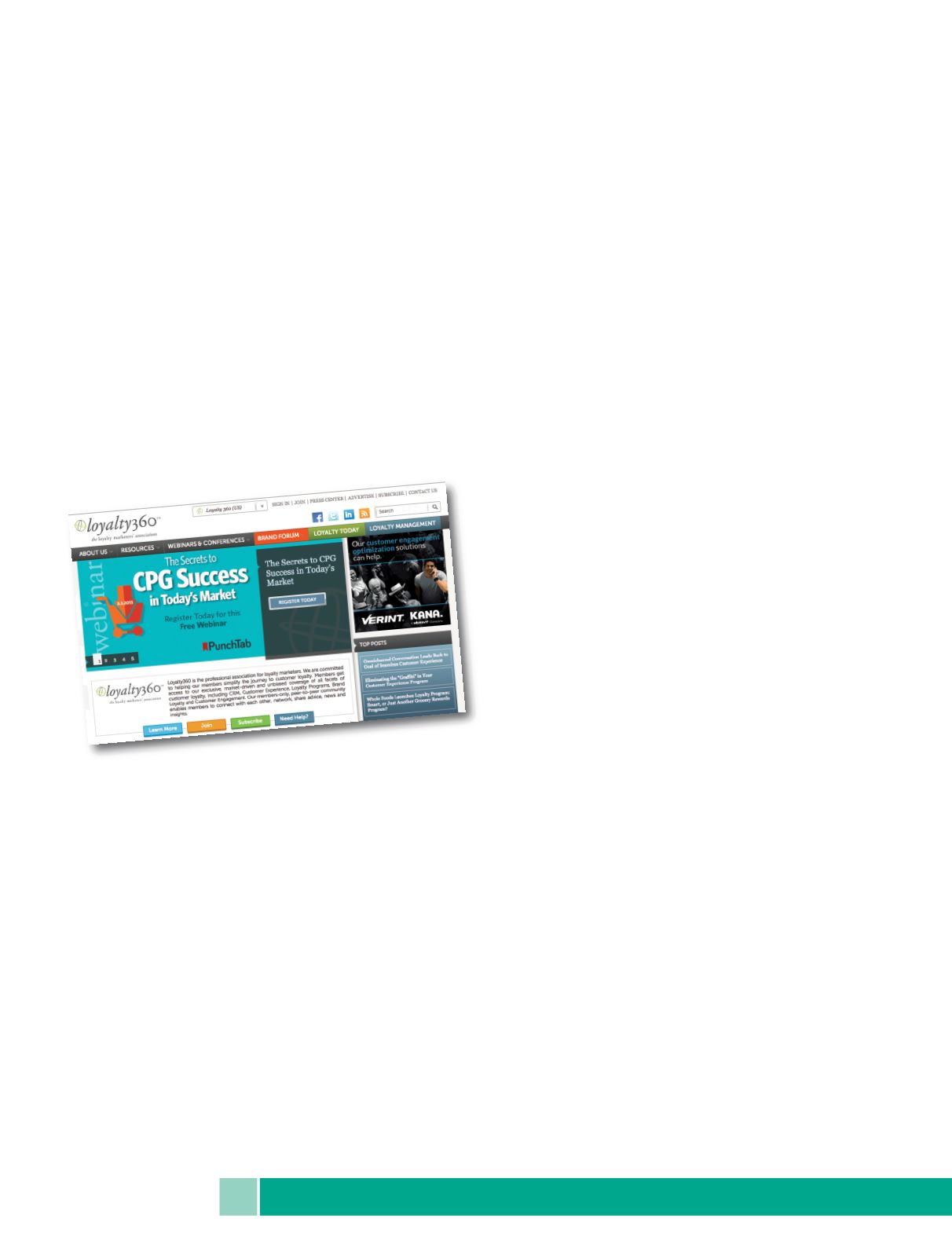

Setting Up A Loyalty Program
Discuss these important questions with your client in
order to structure a successful loyalty program.
What is the potential frequency of purchase
for the product or service that they offer?
For
a title insurance company, funeral home or other
company that offers products that people only
buy a few times in their lives, obviously a loyalty program
does not make sense (although a rewards program for
people who can refer customers can be effective). In
other words, make sure your client’s product or service is
purchased frequently enough by the same target audi-
ence so that your loyalty program can create results.
Along the same lines, it’s up to your customer to have a
product or service that is good enough to earn loyalty.
What is the value proposition and brand
promise of the brand?
Think about what it is
that your customer is really offering so you can
recommend products and a program that rein-
forces and builds on that value proposition and brand
promise. Think beyond the obvious. In the world of Coca-
Cola, they don’t sell flavored water, they sell refreshment.
Items that deliver something “refreshing” make sense for
the program and to maintain the brand.
Discuss the program objectives and goals
with your client.
Clearly, your customers are
interested in increased revenue, profit and mar-
ket share. But what are some of the other goals
that a loyalty program can help them achieve?
• Increase customer loyalty
• Increase frequency of purchase
• Win new customers
• Build a database of customers and key prospects
• Create communication opportunities
Determine costs.
The cost will vary greatly
depending on a lot of variables. For example, a
business-to-consumer program will have a lower
cost per participant than a business-to-business
program, but overall costs will be determined by the
number of participants. In addition to the cost of the pre-
miums and delivery (fulfillment) of the program, there will
be costs for communications, development and program
management.
Promote the promotion.
You’ll also have
opportunities to create signage and to help
your client communicate the loyalty program
internally and externally. There are three groups
of people who should be aware of the program. First, of
course, are the customers and prospects in the target
market. The next is the company’s employees and man-
agement. The third group that needs to know are exter-
nal groups such as the media, the industry in which they
operate and even key vendors and suppliers. What point-
Be The
Go-To Source
|
T
HIRD IN A FIVE
-
PART SERIES
56 •
PPB
• APRIL 2015
GROW
Where To Learn More
About Loyalty Programs
IN THE PROMOTIONAL PRODUCTS INDUSTRY,
there are several suppliers of loyalty cards and a few non-tradi-
tional suppliers of loyalty solutions. Ask your suppliers and their
reps for case histories related to loyalty programs.
Loyalty360
(www.loyalty360.org) is the loyalty marketer’s
association. It has a large library of resources including research,
white papers, webinars, articles and conferences where you can
find out more about becoming an expert and valuable resource in
this field. You might also find organizations that specialize in pro-
gram structure, design and measurement to partner with as you
work to become your clients’ go-to source for loyalty programs,
and premium and product ideas.
Commit yourself to becoming a problem solver. If becoming a
loyalty expert will help you gain more loyal customers, then do it.
1
2
3
4
5
















